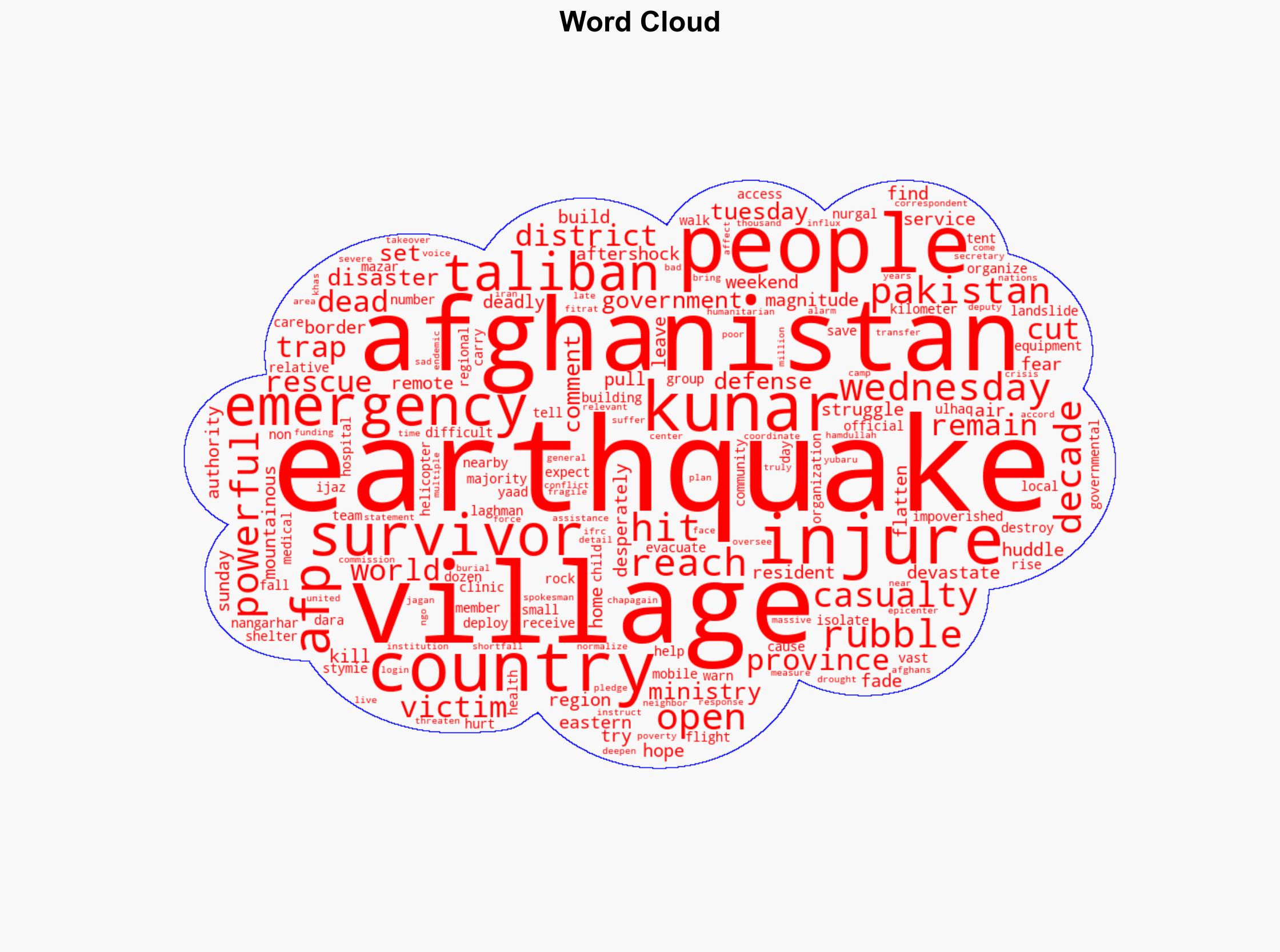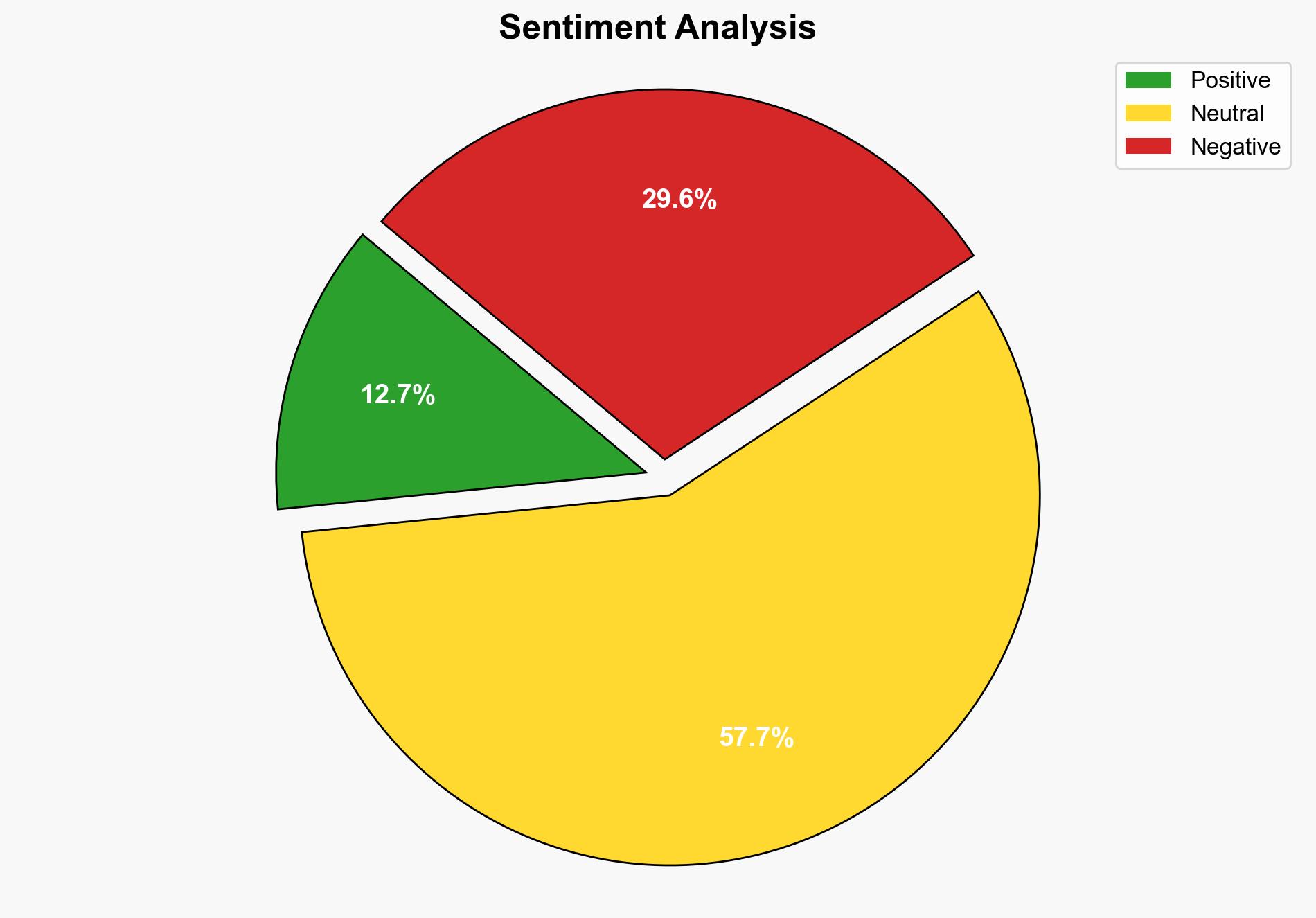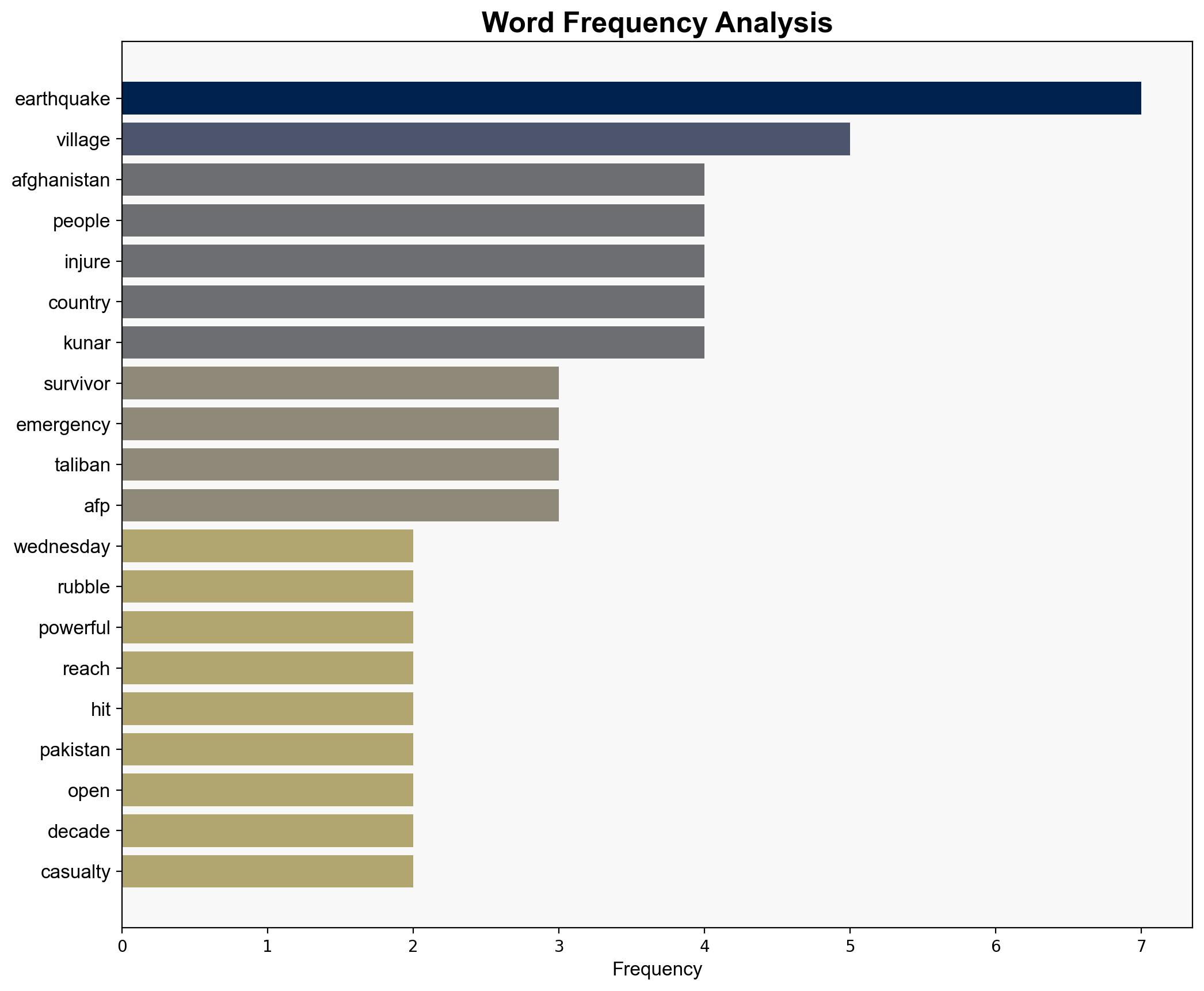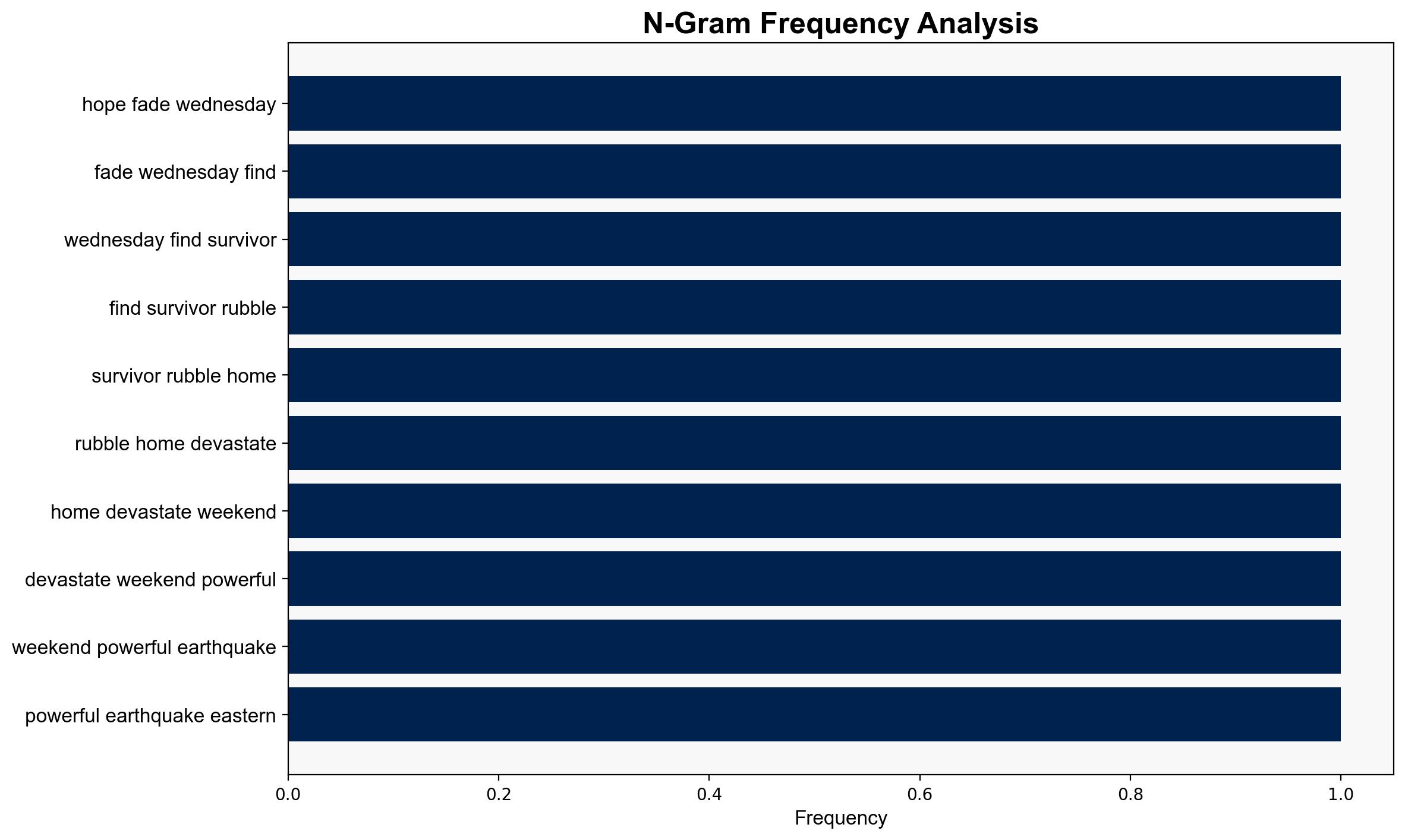Hope dwindles for survivors days after deadly Afghan quake – Japan Today
Published on: 2025-09-03
Intelligence Report: Hope dwindles for survivors days after deadly Afghan quake – Japan Today
1. BLUF (Bottom Line Up Front)
The most supported hypothesis is that the Afghan government’s response capabilities are severely constrained by logistical challenges and resource shortages, exacerbating the humanitarian crisis. Confidence level: Moderate. Recommended action: International coordination to enhance logistical support and resource allocation for immediate relief efforts.
2. Competing Hypotheses
Hypothesis 1: The Afghan government’s response is hindered primarily by logistical challenges and resource shortages, leading to slow and ineffective relief efforts.
Hypothesis 2: The Taliban’s governance structure and lack of international recognition are the primary barriers to an effective response, limiting access to international aid and support.
Using Analysis of Competing Hypotheses (ACH), Hypothesis 1 is better supported by the evidence of remote village inaccessibility, landslides, and the need for helicopters and mobile clinics. Hypothesis 2 is less supported as international assistance is pledged, indicating some level of engagement despite governance issues.
3. Key Assumptions and Red Flags
Assumptions include the belief that logistical challenges are the primary obstacle, not political factors. A red flag is the potential underreporting of casualties due to inaccessible areas. There is a blind spot regarding the Taliban’s internal decision-making and its impact on response efficacy.
4. Implications and Strategic Risks
The ongoing humanitarian crisis could destabilize the region further, leading to increased migration pressures on neighboring countries. The lack of effective response could erode public trust in the Taliban, potentially leading to internal dissent. There is a risk of exploitation by non-state actors seeking to capitalize on the chaos.
5. Recommendations and Outlook
- Immediate international coordination to provide logistical support, such as airlifts and medical supplies, to remote areas.
- Engage with regional partners to facilitate cross-border aid delivery.
- Scenario Projections:
- Best Case: Rapid international response stabilizes the situation, minimizing casualties.
- Worst Case: Continued inaccessibility leads to a significant increase in casualties and regional instability.
- Most Likely: Gradual improvement in aid delivery with persistent challenges due to terrain and governance issues.
6. Key Individuals and Entities
Ijaz Ulhaq Yaad, Hamdullah Fitrat, Jagan Chapagain
7. Thematic Tags
national security threats, humanitarian crisis, regional focus





